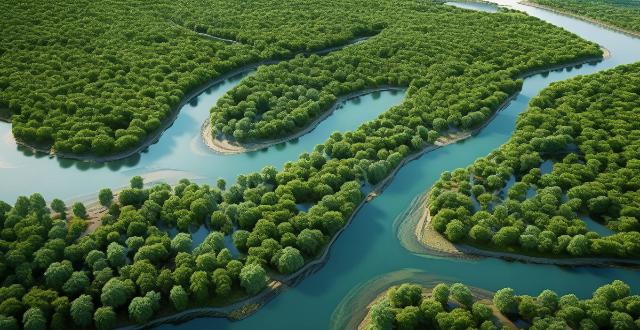Ecological protection areas can mitigate climate change impacts by carbon sequestration, habitat preservation, water conservation, soil erosion control, and nutrient cycling. These areas safeguard biodiversity, protect natural resources, and preserve ecosystem functions. They help reduce atmospheric CO2 levels, provide refuge for species adapting to changing environmental conditions, maintain stable water levels, filter pollutants from water sources, control soil erosion, and promote nutrient cycling processes. Supporting and expanding ecological protection areas is crucial for a sustainable future.

Can Ecological Protection Areas Help Mitigate the Impacts of Climate Change?
Ecological protection areas, also known as conservation areas or nature reserves, are designated regions that aim to safeguard biodiversity, protect natural resources, and preserve ecosystem functions. These areas play a crucial role in mitigating the impacts of climate change by providing several benefits. In this article, we will discuss how ecological protection areas can help mitigate the effects of climate change.
Carbon Sequestration and Storage
One of the primary ways ecological protection areas can help mitigate the impacts of climate change is through carbon sequestration and storage. Trees and other plants absorb carbon dioxide (CO2) from the atmosphere during photosynthesis and store it in their biomass. When these trees die, they decompose slowly, releasing the stored carbon back into the atmosphere over time. By protecting forests and other vegetation within ecological protection areas, we can ensure that these carbon sinks continue to function effectively.
Additionally, ecological protection areas often include wetlands, which are highly effective at storing carbon in their soils. Wetlands act as natural carbon sponges, trapping and holding onto large amounts of organic matter that would otherwise decompose and release CO2 into the atmosphere. By preserving wetlands within ecological protection areas, we can help reduce atmospheric CO2 levels and mitigate the effects of climate change.
Habitat Preservation and Restoration
Ecological protection areas also play a vital role in preserving and restoring habitats for various plant and animal species. As climate change progresses, many species are forced to migrate to new areas with more suitable conditions for their survival. By protecting diverse habitats within ecological protection areas, we can provide refuge for these species and help them adapt to changing environmental conditions.
Moreover, ecological protection areas often serve as important breeding grounds for many species, including migratory birds and marine life. By protecting these critical habitats, we can help maintain healthy populations of these species and ensure their continued existence in the face of climate change.
Water Conservation and Quality
Water is an essential resource for all life on Earth, and ecological protection areas play a crucial role in conserving water resources and maintaining water quality. Forests within ecological protection areas help regulate water cycles by intercepting rainfall, reducing runoff, and increasing groundwater recharge. This helps to maintain stable water levels in rivers, lakes, and aquifers, which is particularly important in the face of climate change-induced droughts and altered precipitation patterns.
Furthermore, ecological protection areas often contain wetlands and riparian zones that filter pollutants from surface water and groundwater. By protecting these natural filtration systems, we can help maintain clean water sources for both wildlife and human communities affected by climate change.
Soil Erosion Control and Nutrient Cycling
Soil erosion is a significant concern in many regions of the world, particularly in areas with steep slopes or fragile ecosystems. Ecological protection areas can help control soil erosion by promoting vegetation cover and reducing land disturbance activities such as logging or agriculture. This not only helps to preserve soil fertility but also reduces the risk of sediment runoff into waterways, which can harm aquatic ecosystems and exacerbate flooding events caused by climate change.
In addition to controlling soil erosion, ecological protection areas contribute to nutrient cycling processes by supporting diverse plant communities that capture and recycle nutrients from the environment. This helps to maintain healthy soils and promotes the growth of vegetation that can further contribute to carbon sequestration and storage.
Conclusion
In conclusion, ecological protection areas offer numerous benefits for mitigating the impacts of climate change. By preserving carbon sinks like forests and wetlands, protecting critical habitats for plant and animal species, conserving water resources and quality, controlling soil erosion, and promoting nutrient cycling processes, ecological protection areas play a vital role in combating climate change. It is essential that we continue to support and expand these protected areas to ensure a sustainable future for our planet.